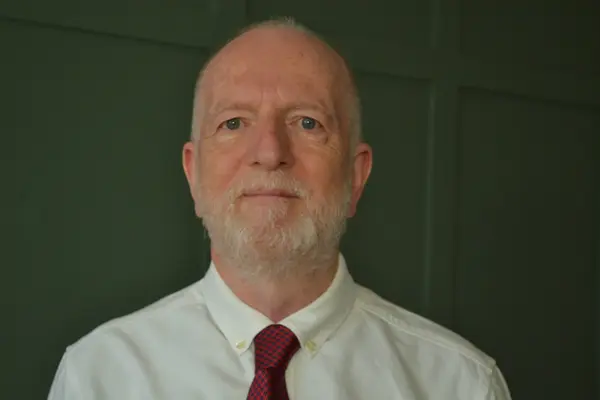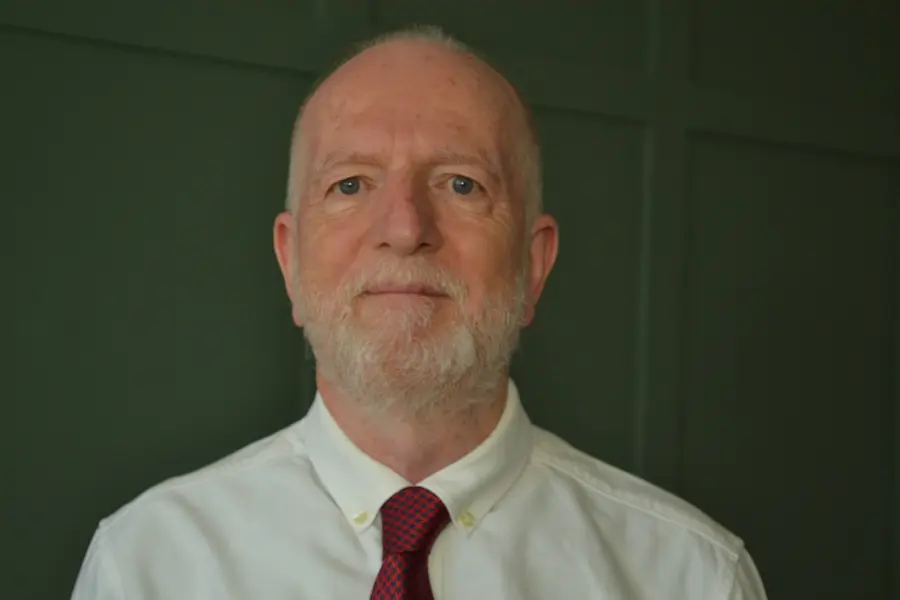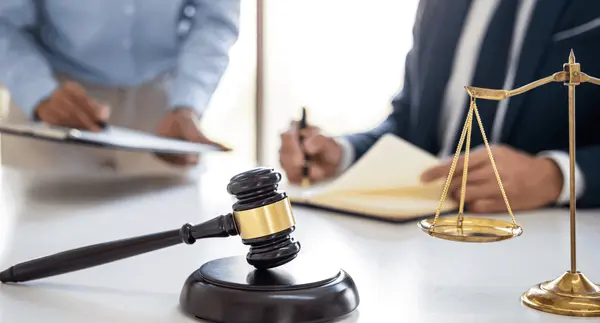
Gerry McMahon is an acknowledged national expert in People Management. He has over 35 years’ experience - as a workplace investigator (on bullying/harassment/ disciplinary/dismissal/grievance issues), trainer, negotiator, facilitator, mediator, arbitrator and team builder - across a wide range of employment sectors. He is the M.D. of the H.R. training and advisory company Productive Personnel Ltd.
Gerry has also had an extensive range of books and articles published and been a columnist with the Industrial Relations News, Irish Times, Sunday Business Post, and Irish Independent and expert commentator on H.R./Employee Relations for R.T.E. and TV3/Virgin. He has also served on numerous Legal Island and C.I.P.D. judging panels and is a Council member of the Irish Association for Industrial Relations.
Contact: Tel. 087-2471415; E-Mail: ppl1gerry@gmail.com
Given the sizeable financial investment associated with appointments and their impact on organisational morale and success, it is worth getting the selection interview right. Indeed it can be argued that it is the most important of all ‘people-related’ activities at work. Furthermore, these guidelines - for this most consequential of all H.R. activities - should help ensure that you are getting the best person for the job and avoiding a costly and embarrassing court appearance. Indeed, it is chastening to note the number of high profile employers that have fallen foul of the law in this crucial area, including Ryanair, the Coombe and Mater Hospitals, Independent Newspapers, the Health Service Executive, the Medical Council, VEC’s, Local Authorities, Trinity College, University Colleges Dublin and Galway etc. Hence, there is a convincing case for applying ‘best practice’ to the selection interview process at the Before, During and After stages.
1. Before The Interview ⚓︎
Firstly, it is important that one reviews all of the available information – incl. the job description and person specification. The person specification details the main ‘person’ requirements, criteria or competencies associated with effective job performance.
A weighting system should be applied to these requirements and arrangements made to score candidates on them. This approach facilitates a comparative assessment where there is more than one candidate. It is also a valuable way of minimising biases, clearly specifying what’s relevant and the scores\marks available under the various headings.
It is preferable that the interview board be comprised of a diversity of people, who agree the coverage plan and timescales (i.e. who will cover what and when).
Timescale considerations are also important for ensuring that the job is done right (e.g. that adequate time is allocated to assess each interviewee and for the post-interview assessment phase). In the event that there is more than one interviewer, a chairperson should be appointed. It is the chair’s responsibility to co-ordinate the board’s activities and to ensure that all interviewers know the (agreed) ground rules and their specific role in the process.
Arrangements should also be made to prevent interruptions and distractions, together with some consideration of the seating and desk positioning. Of course, the fewer the interviewers the greater the scope one has in devising an appropriate or welcoming setting\lay-out.
Furthermore, it is important that the process allows all candidates to compete on an equal footing (e.g. are adjustments for people with disabilities required?). Prepare for notetaking - that is precise, objective and factual. Related thereto, it is also advisable that interviewers are trained in this highly sensitive and legalistic area before being let loose!
Having reviewed the aforementioned documentation, good interviewers will also study the candidates’ applications. This extends to the preparation of appropriate questions (i.e. competency and\or situational-type questions). A key ground rule here is to ensure ‘logical linkage’. That is, questions should be designed to elicit information directly relevant to the scoring system.
Related thereto, the scoring system should be derived from the aforementioned person specification which is itself, in turn, based upon the job description.
2. During The Interview ⚓︎
Establish rapport. Having introduced the interviewers, get the candidate talking. This entails nothing more complex than ‘breaking the ice’, as you try to relax the interviewee. Outline the purpose and structure of the interview. Having confirmed the structure, it’s important that you stick to it.
Clear the fact that there will be (discreet) notetaking. Follow the agreed coverage plan and interview in turn. Don’t engage in the potentially disconcerting practice of crisscross questioning, which is unfair and confusing for both the interviewer (who may be pursuing a particular line of questioning) and the interviewee (who may find the experience more akin to an interrogation).
Listen as much as possible. This is the key to good interviewing and can entail up to 85% of the interview time, as you elicit enough relevant factual information to enable an ‘informed decision’.
Alongside open-ended questions, clarifying and reflecting are useful techniques for getting an interviewee to open up, whilst probing and close-ended questions can counter evasiveness and enable specificity.
Maintain eye contact and give appropriate positive feedback (verbally and non-verbally), to show your interest in the interviewee and to encourage them to talk\open up. Don’t rush this important interaction or be afraid to use ‘silence’ if and when appropriate.
For good practical and legal reasons, treat all candidates equally. Having checked that his\her colleagues have no further questions, the chairperson should invite the candidate to ask questions and to volunteer additional information.
Assuming that the interviewee has been provided with all relevant organisation and job-related information pre-interview, this may be a good time to inquire as to whether clarification is sought in respect of any of it.
Thank the interviewee for coming and sharing their information and advise them as to the next stage and timescale of the selection process.
3. After The Interview ⚓︎
Score the interviewee. This assessment - against the person specification related scoring system - should take place immediately after the candidate has left the room. To be blunt, once the interview is over, the interviewers should ‘Shut Up’, enabling independent assessments. Then - and only then - should they share their assessment, enabling the discussion to focus on significant variations in the assessments.
An appropriate and practical device deployed by some boards is that where there is ‘little’ variation between the interviewers in their scoring under a specific criterion, they proceed by calculating an average score. However, should the variation be ‘significant’ under any criterion - and the numeric difference between ‘little’ and ‘significant’ must be agreed at the preparatory phase - discussion ensues until consensus emerges, serving to reduce the ‘significant’ to ‘little’, as one or more interviewers alter their score on the basis of an informed debate.
The scoring\assessment process should concentrate on solid facts of past behaviour. Facts are more appropriate than ‘gut instinct’ should the board have to defend its decision! Information from any other tests used can now be incorporated into the decision making process.
Such are the limitations of the selection interview in predicting future performance, there is a good case for using appropriate tests on a pre-determined basis (e.g. assessment centres, personality, aptitude, achievement tests). All assessments, records and notes should be retained.
The bottom line is that a record of how a candidate has been selected (or rejected) is essential to demonstrate the objectivity of the process. Advise candidates of the outcome when appropriate.
Good employers will also be prepared to give detailed feedback to applicants – and if these guidelines are adhered to, they shouldn’t find themselves giving that feedback in court!
SUMMARY CHECKLIST: Successful Selection Interviews ⚓︎
1. Before
- Devise a candidate assessment\scoring system, which is directly linked to the person specification, which is in turn derived from the job description\role profile.
- Agree the coverage plan and timescales with all board members.
- Check that the board members are trained in the sensitive and legalistic art of interviewing and that they know the ‘ground rules’ in advance.
- Ensure an appropriate interview room setting\layout.
- Take precautions to prevent interruptions.
- Prepare for notetaking.
- Study the candidates’ applications and prepare appropriate (e.g. competency-based) questions, ensuring that such questions are designed to elicit information relevant to the scoring system.
2. During
- Establish rapport (i.e. ‘break the ice’).
- Outline the purpose and structure of the interview.
- Clear the (discreet) notetaking.
- Follow the agreed coverage plan and interview in turn.
- To get the interviewee to open up\talk and to enable an ‘informed decision’, use open-ended questions, clarifying and reflecting, whilst maintaining eye contact with appropriate positive feedback. Probing and close-ended questions are ideal when pursuing specific information.
- Don’t rush and use ‘silence’ if and when appropriate.
- Treat all candidates equally.
- Invite the candidate to ask questions and volunteer any additional info.
- Thank the interviewee for coming and advise as to the next stage\timescale.
3. After
- Shut up! This enables independent assessments that should focus on the facts, against the pre-determined person specification-scoring system.
- Share and agree assessments, using the pre-determined mechanism for addressing any variations in assessment.
- Incorporate information on the pre-arranged basis from any other selection tests used.
- Ensure that all assessment records and notes are retained.
- Advise candidates of the outcome when appropriate.
The Key Message: ⚓︎
Selection interviewing is not ‘scientific’ but it must be ‘systematic’.
Continue reading
We help hundreds of people like you understand how the latest changes in employment law impact your business.
Please log in to view the full article.
What you'll get:
- Help understand the ramifications of each important case from NI, GB and Europe
- Ensure your organisation's policies and procedures are fully compliant with NI law
- 24/7 access to all the content in the Legal Island Vault for research case law and HR issues
- Receive free preliminary advice on workplace issues from the employment team
Already a subscriber? Log in now or start a free trial


